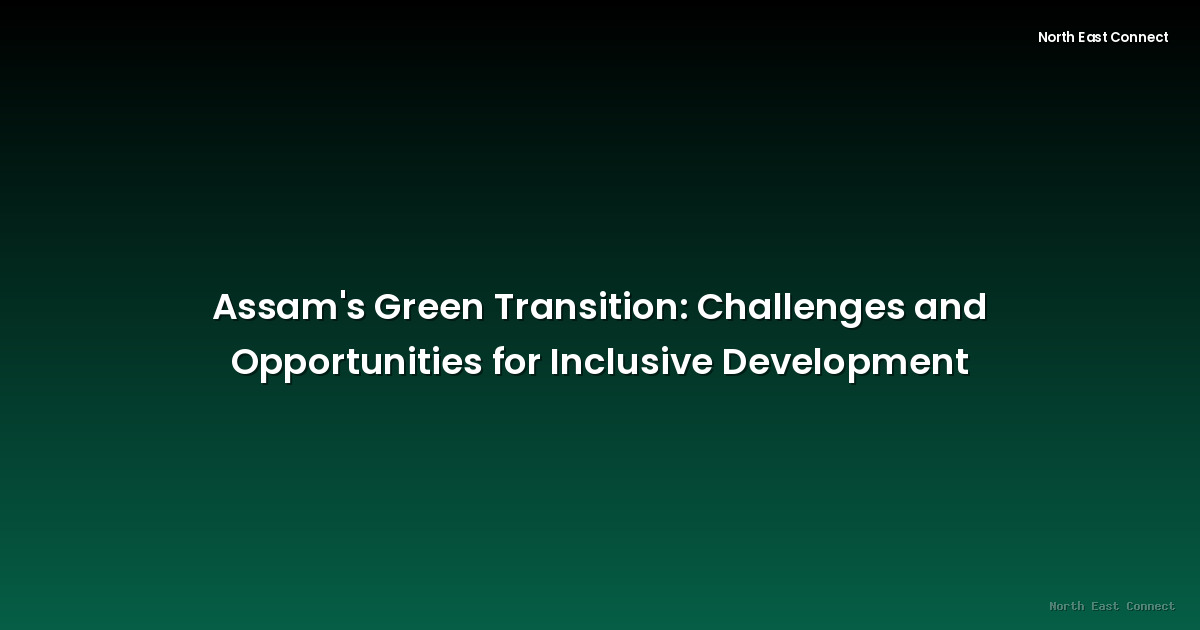2025-09-04 · News
Assam, a state known for its rich biodiversity and agricultural landscape, is embarking on a crucial journey towards a green transition. This shift, aiming for a sustainable and environmentally friendly economy, presents both immense opportunities and significant challenges. While the potential benefits are substantial, ensuring this transition is inclusive and benefits all segments of society is paramount. This analysis explores the key aspects of Assam’s green pathway, highlighting both the promising prospects and the hurdles that need to be overcome.
One of the primary drivers for Assam's green transition is the urgent need to address climate change. The state is highly vulnerable to its effects, facing increased frequency and intensity of floods, droughts, and erosion. A move towards renewable energy sources, sustainable agricultural practices, and improved waste management is crucial for mitigating these impacts and building resilience. The potential for generating clean energy, particularly hydropower and solar power, is significant, offering opportunities for economic growth and job creation.
However, the path towards a greener Assam is fraught with complexities. A significant concern is ensuring equitable access to the benefits of this transition. Marginalized communities, particularly those dependent on traditional livelihoods like agriculture and fishing, are often disproportionately affected by environmental changes and may lack the resources and capacity to adapt to a new economic model. The implementation of green policies must therefore prioritize their needs and ensure they are not further disadvantaged. This might involve providing training and skill development programs, offering financial support for adopting sustainable practices, and creating employment opportunities in the burgeoning green economy.
Another key challenge lies in integrating environmental considerations into existing development plans. Balancing economic growth with environmental protection requires careful planning and coordination across different government departments and stakeholders. This necessitates robust environmental impact assessments, transparent decision-making processes, and effective regulatory frameworks to ensure that environmental concerns are not sidelined in the pursuit of economic progress.
Furthermore, addressing the issue of economic inequality is crucial for a successful green transition. The benefits of a green economy must be shared widely, preventing the concentration of wealth and opportunities in the hands of a few. This requires policies that promote fair wages, decent working conditions, and access to capital for small and medium-sized enterprises operating in the green sector. Investing in education and skill development can also ensure that the workforce is equipped with the necessary skills to participate in the evolving green economy.
The success of Assam’s green transition hinges on effective governance, transparent policymaking, and community participation. Engaging local communities in the planning and implementation processes is essential to ensure that policies are relevant, effective, and responsive to their needs. Building strong partnerships between government agencies, NGOs, and the private sector can leverage diverse expertise and resources, facilitating a more coordinated and comprehensive approach.
In conclusion, Assam’s journey towards a green economy presents a significant opportunity for sustainable development and improved quality of life. However, realizing this potential requires a proactive and inclusive approach that addresses the unique challenges facing the state. By prioritizing equitable access to benefits, integrating environmental considerations into development plans, and fostering strong partnerships, Assam can pave the way for a greener, more prosperous, and more inclusive future for all its citizens. Continuous monitoring and evaluation are also needed to ensure the transition remains on track and adjustments are made as required.







